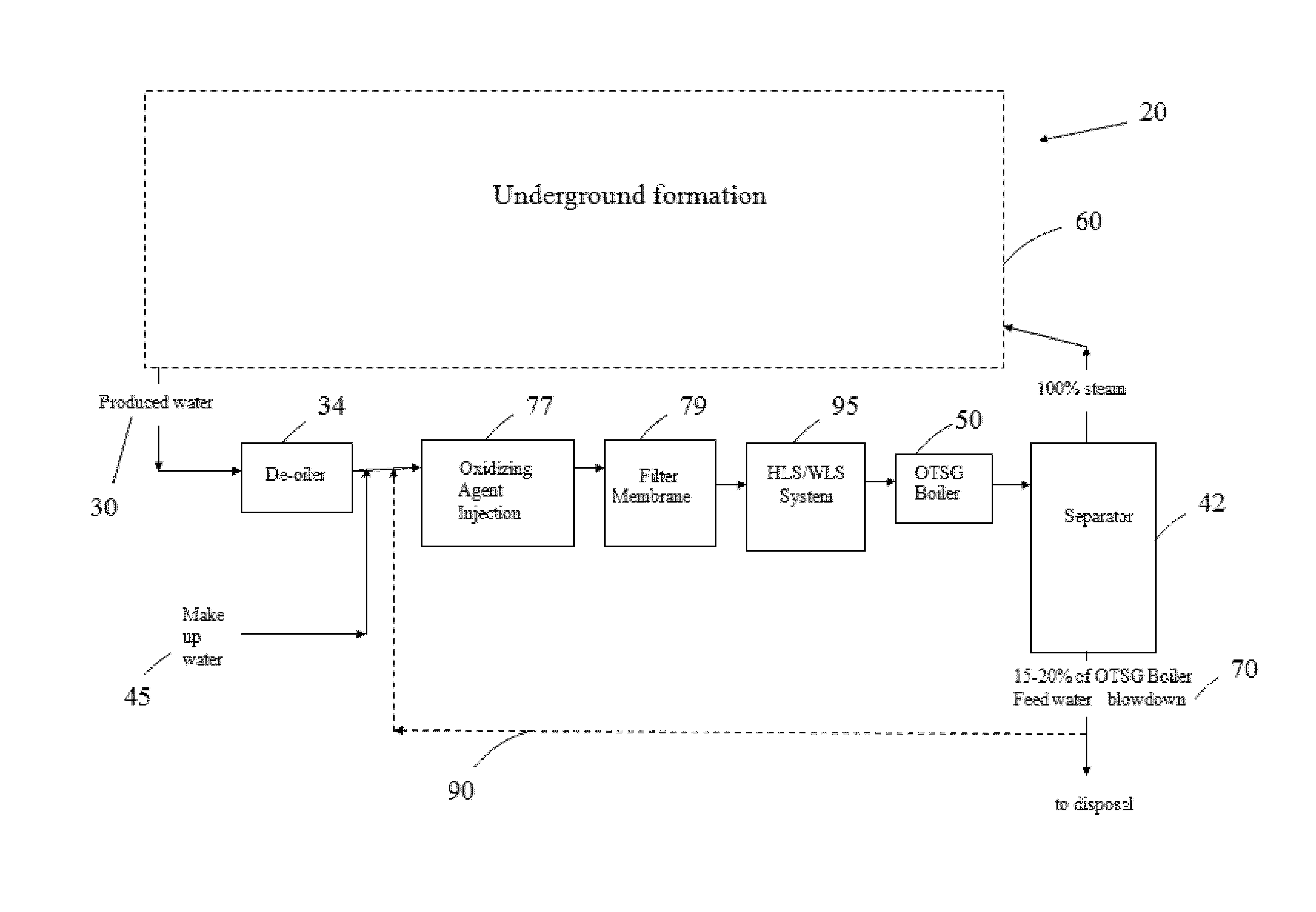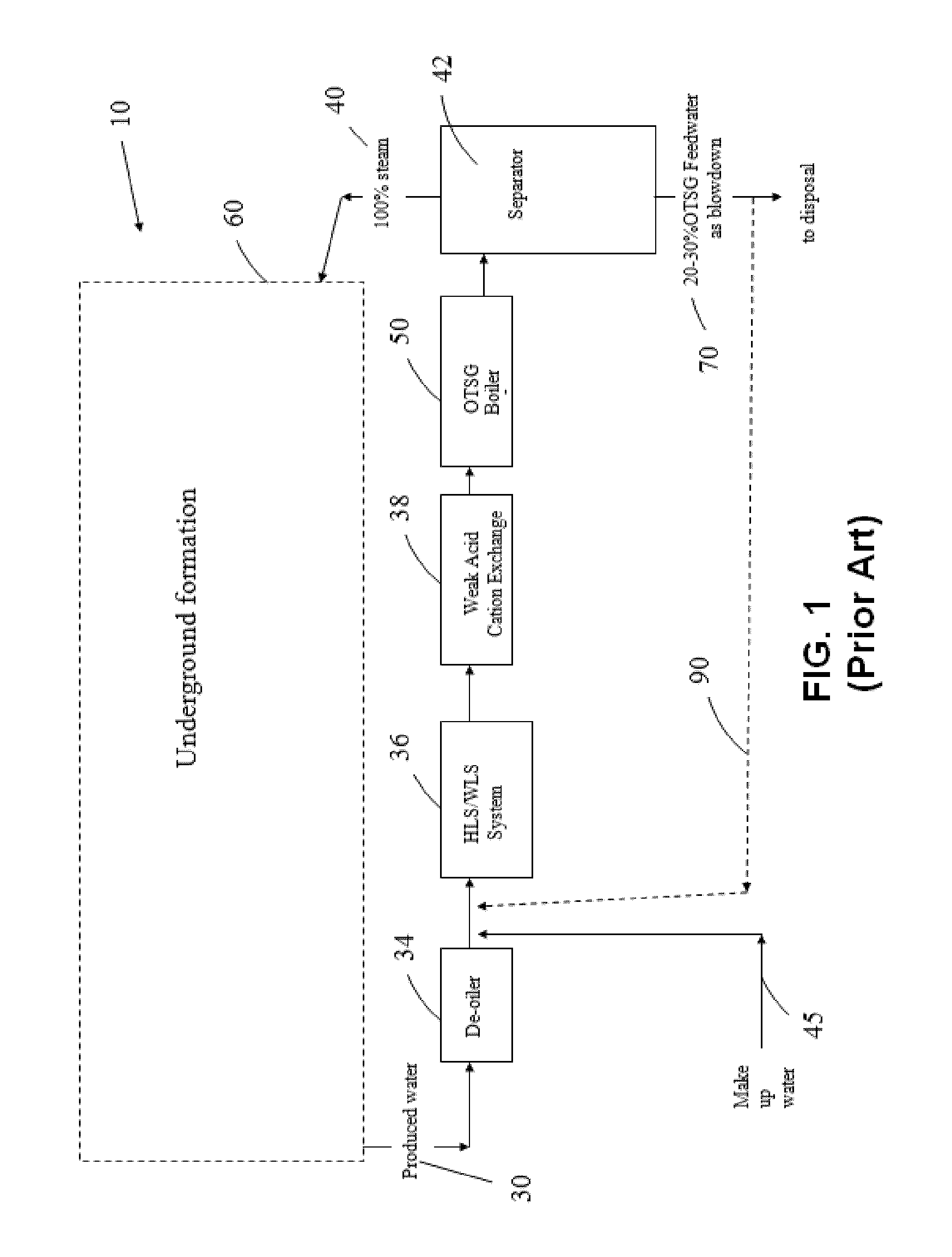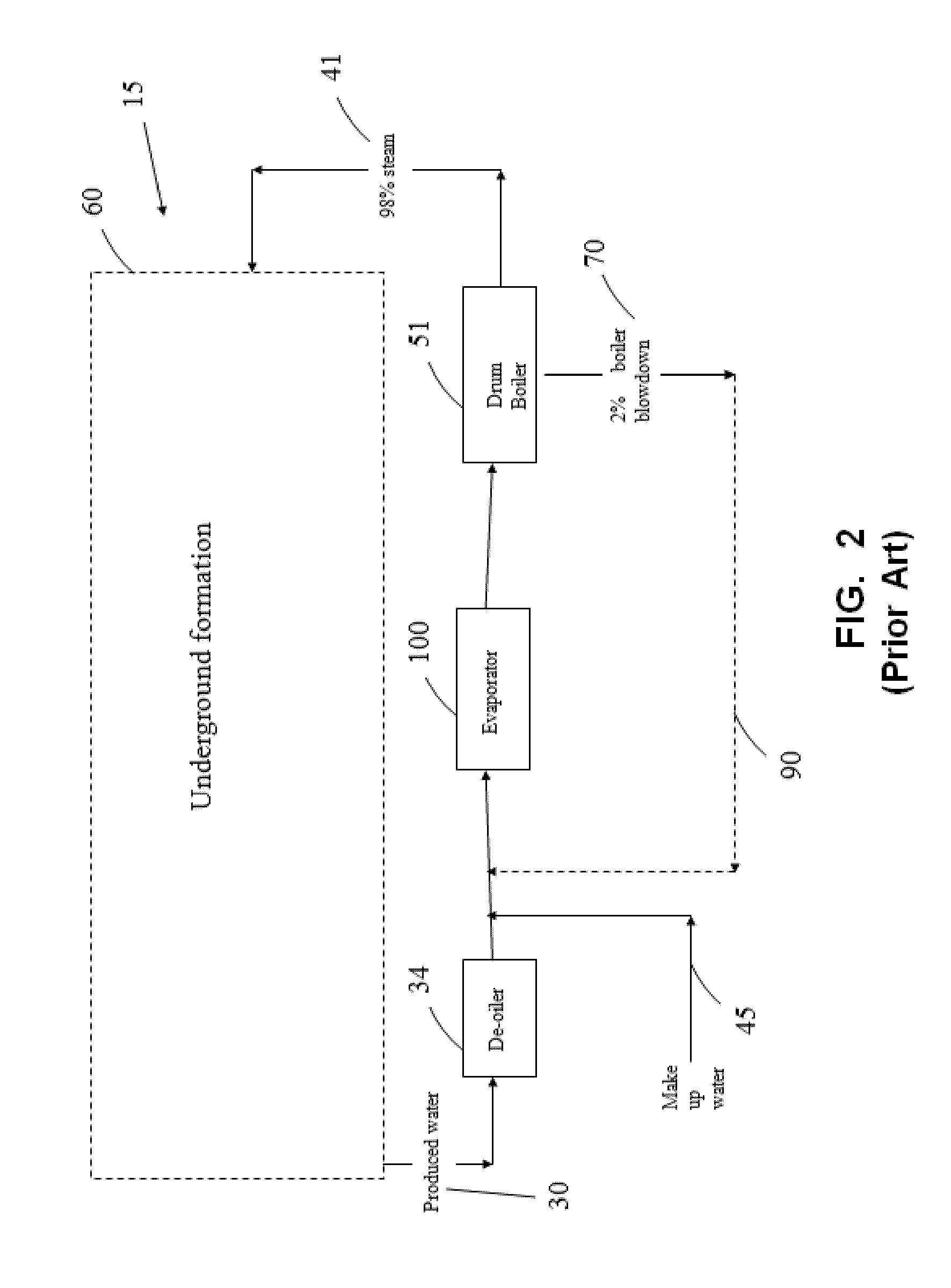SAGD water treatment system and method
- Summary
- Abstract
- Description
- Claims
- Application Information
AI Technical Summary
Benefits of technology
Problems solved by technology
Method used
Image
Examples
example 1
Characterization of Non-Oxidized and Oxidized BBD Water Samples
[0109]Preliminary analysis of non-oxidized and oxidized BBD water samples were conducted. The BBD water was sampled from the Tucker facility in Cold Lake, Alberta, treated with the oxidation treatment as described above, and analyzed to determine the presence of organic and inorganic constituents. The samples were also examined to determine any additional observable changes resulting from oxidation of the BBD water. Tables 1 and 2 show the effect of oxidation on solution pH, conductivity, TOC, DOC, colour, and the concentration of select ions.
TABLE 1Water quality of oxidized and non-oxidized boiler blowdown (BBD)samplesSampleConductivityColourTOCDOCBBD WaterpH(mS / cm)(CU)(ppm C)(ppm C)Non-Oxidized10.856.09000656586Oxidized10.756.99600626576
TABLE 2Inorganic water quality of oxidized and non-oxidized BBD samples[Al][Ca][Fe][K][Mg][Na][Si]Sample(mg / (mg / (mg / (mg / (mg / (mg / (mg / BBD WaterL)L)L)L)L)L)L)Non-— *— *— *243.8— *1300361.2...
example 2
Membrane Filtration Performance Profiles
[0110]As described above, membrane filtration performance profiles were conducted with non-oxidized and air-oxidized boiler blowdown water (BBD) samples that were freshly sampled from the Tucker facility. The samples were treated through two commercial membranes with MWCO (molecular weight cut-off) at around 1000 Da (Membrane 1) and 300 Da (Membrane 2). The tests were operated in cross flow mode at 50° C. with the initial permeate flux at 18 GFD (Gallons per square foot of membrane per day), volumetric feed flow rate at 1.0 GPM and 65 psi and 35 psi operational pressure for Membranes 1 and 2, respectively.
Permeate Flux and Fouling Propensity Profile
[0111]Permeate flux and fouling propensity was observed using the methodology described above. Specifically, as shown from FIG. 8, flux through Membrane 1 was monitored over time under the operating conditions above.
[0112]The filtration was initially operated at the native pH of the boiler blowdown ...
PUM
 Login to View More
Login to View More Abstract
Description
Claims
Application Information
 Login to View More
Login to View More - R&D
- Intellectual Property
- Life Sciences
- Materials
- Tech Scout
- Unparalleled Data Quality
- Higher Quality Content
- 60% Fewer Hallucinations
Browse by: Latest US Patents, China's latest patents, Technical Efficacy Thesaurus, Application Domain, Technology Topic, Popular Technical Reports.
© 2025 PatSnap. All rights reserved.Legal|Privacy policy|Modern Slavery Act Transparency Statement|Sitemap|About US| Contact US: help@patsnap.com



